The Kharkov during the German occupation in color
Categories: History
By Pictolic https://pictolic.com/article/the-kharkov-during-the-german-occupation-in-color.htmlEven after so many years is still interested in the events of the Second world war. Still there are arguments about the interpretation of many of its episodes and events. Unlike earlier wars, this war left behind a huge number of photographs that captured those terrible events. New pictures were before that in closed archives and private collections become available to a wide audience. Of particular interest are the realistic color images, which have a higher fullness convey the atmosphere of those years.
Today we will show a series of images of the occupied Kharkov, taken mostly in 1942. Some of the buildings in the photos were destroyed after airstrikes and shelling, but after a year, still more the streets of Kharkov will be destroyed, when in 1943, the city will again become the arena of fierce battles. Presented in a selection of photos of many of the streets are recognizable, but some of the buildings in the photographs have not survived to the present day, as it was destroyed during the fighting or demolished in the postwar years.
In spite of everything, on the streets of the occupied city in 1942, continuing life — Kharkov are trading, public transport, full of signs in German and Ukrainian languages, people consider the German propaganda.
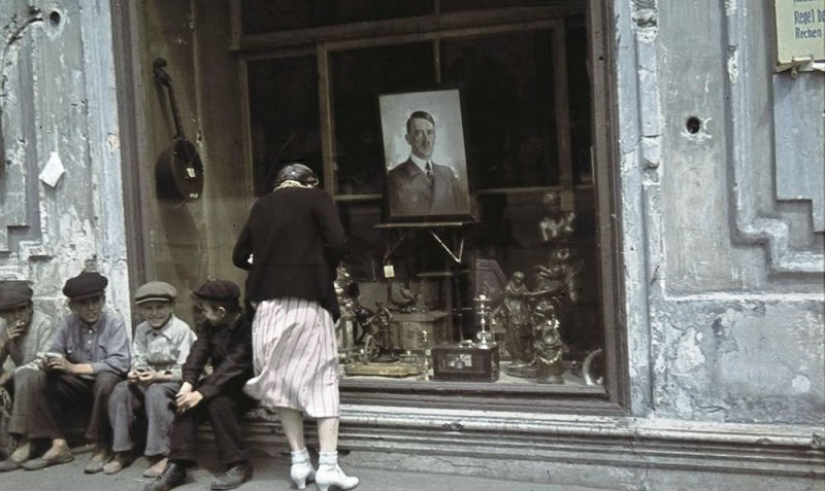

Citizens against the background of trade pavilions of the Central market of Kharkov.
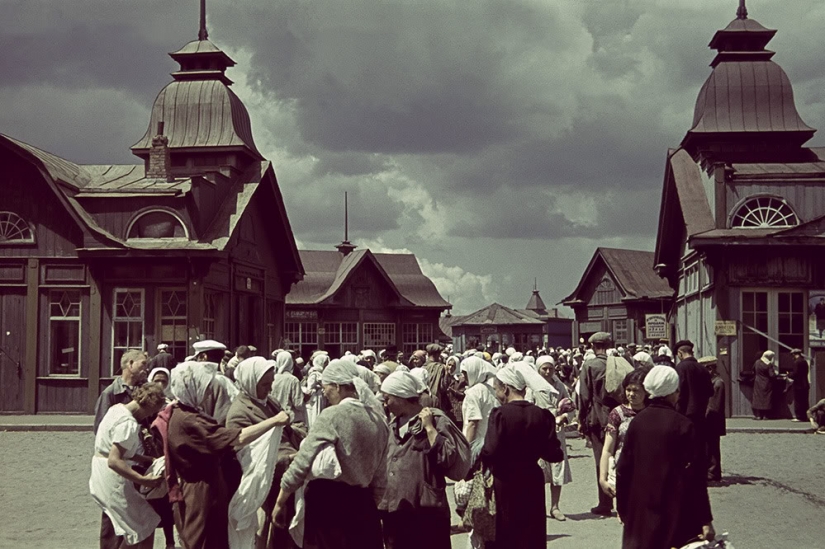
People on one of the victims in the bombing of the Central streets of Kharkiv. On the horizon we see the current building of the Kharkiv National University, and in those days — House Projects. The building was severely damaged during the war and by 1960 it was rebuilt and given to the University.
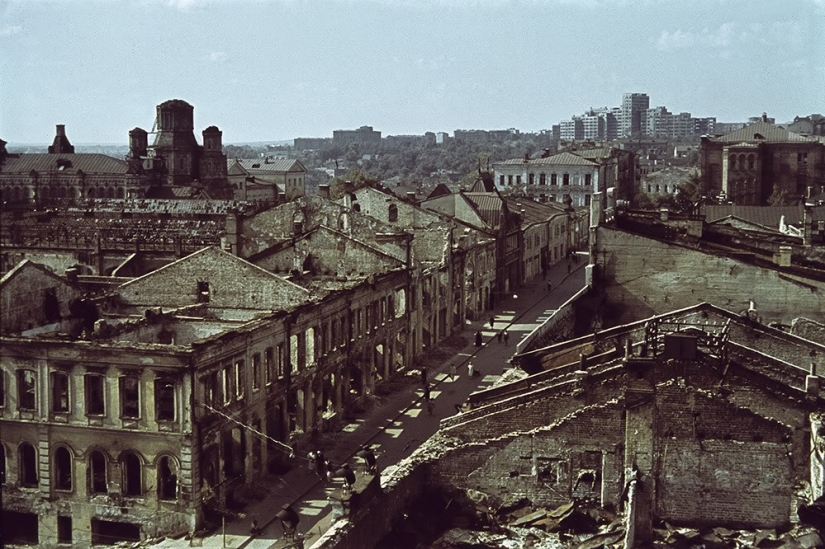
Trade in the Central market. In the background are visible the domes of the Annunciation Cathedral (on the right) and the dome of the assumption Cathedral, which since 1986 is the House of organ and chamber music.
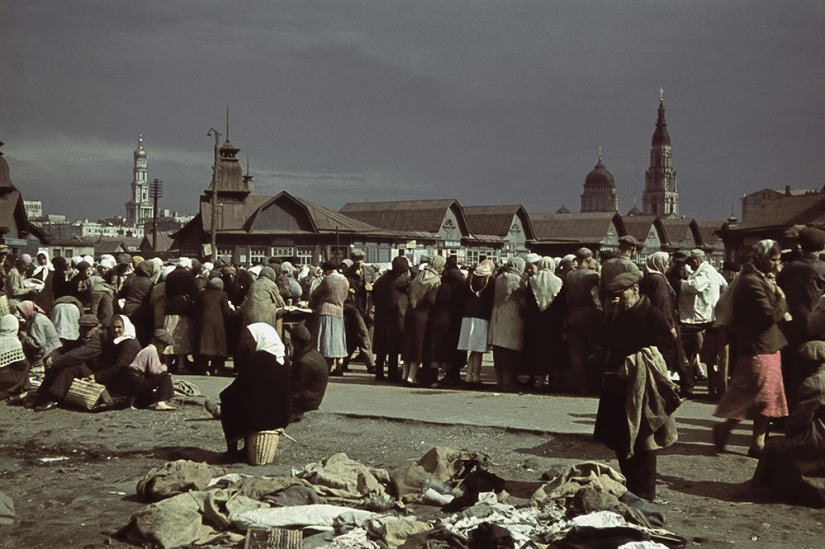
German soldiers at the window cafe "Caucasus" in Kharkov.
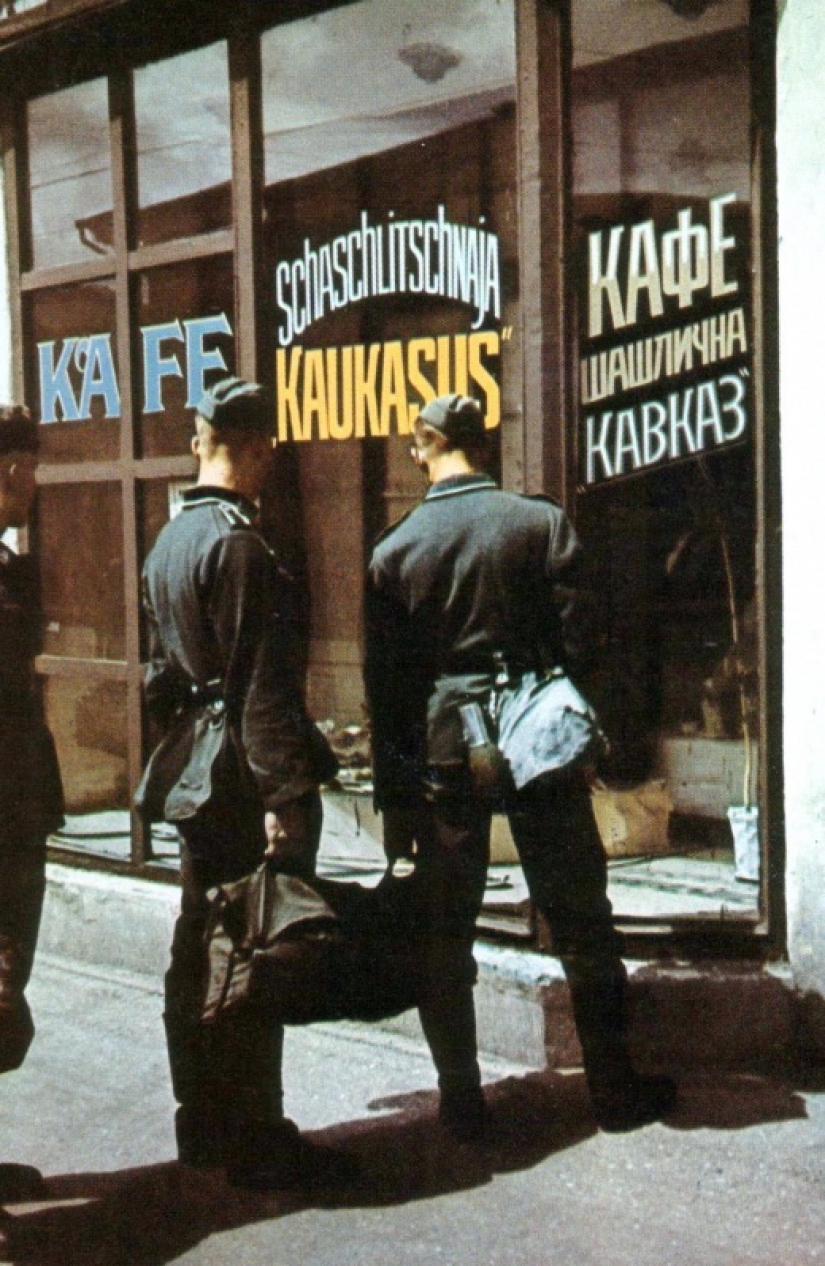
A portrait of Adolf Hitler in a shop window in the occupied Kharkov 1942.
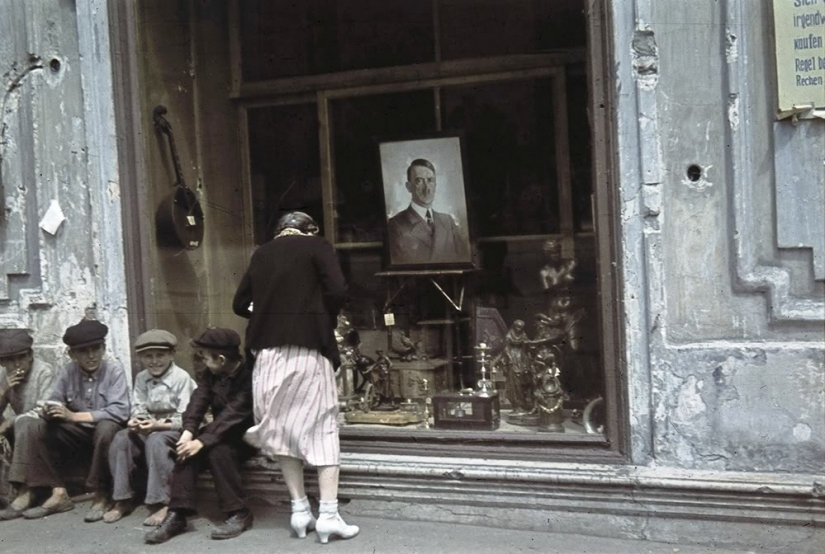
Kharkiv consider anti-Semitic and bisovetska posters.
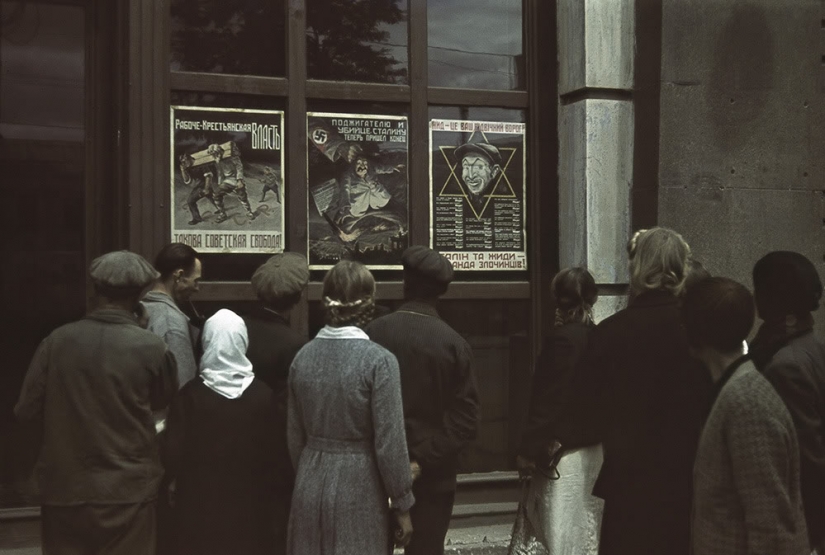
Tevelev square in the occupied Kharkov (now — Constitution square). The building on the right is not preserved, the post-war developments.
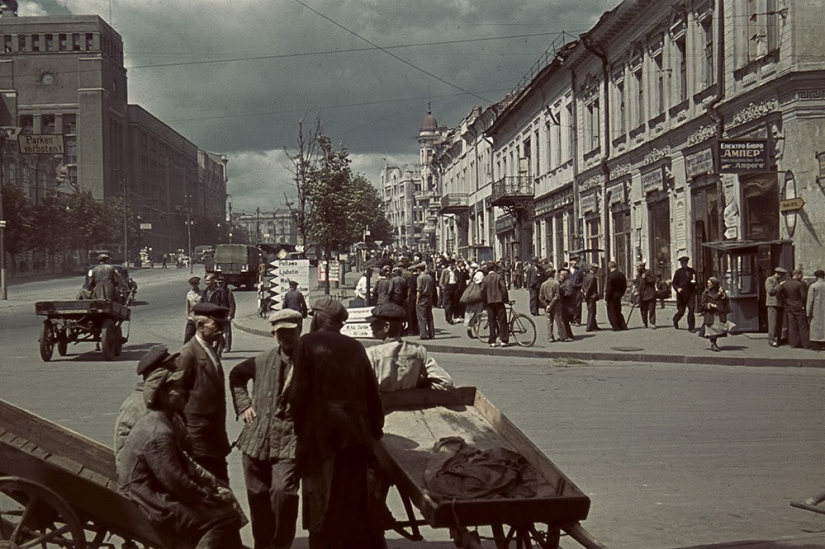
The hotel "Krasnaya" in the occupied Kharkov in June-July 1942. Before the revolution, the hotel was called "Metropol". It was one of the most beautiful buildings in the city, but during the occupation, it was badly damaged and was beyond repair. In its place after the war, a new building, normal for the time of architecture.
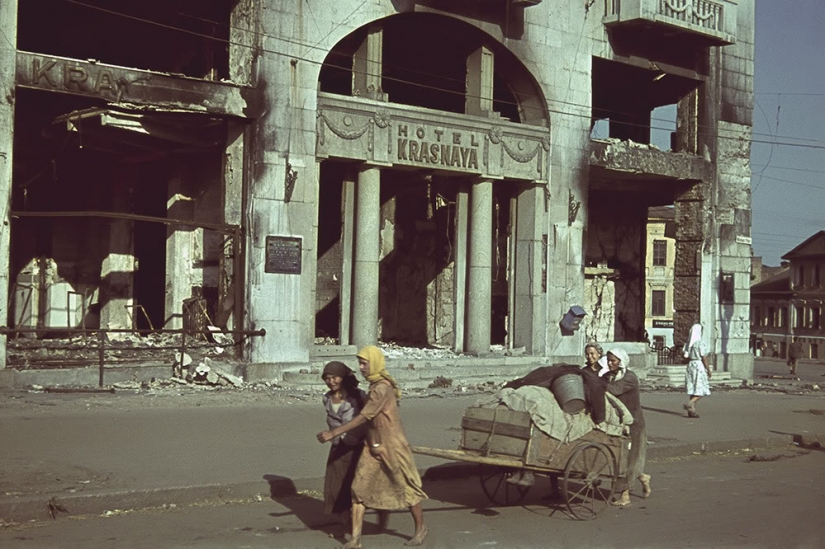
Area Tevelev in occupied Kharkov (now — Constitution square). Left — heavily damaged during the occupation of the building "Red", demolished after the war. The picture was taken from the roof of the Palace of pioneers (former Nobility Assembly), which was destroyed during the occupation; now in its place a monument in honor of the proclamation of Soviet power in Ukraine (now dismantled).
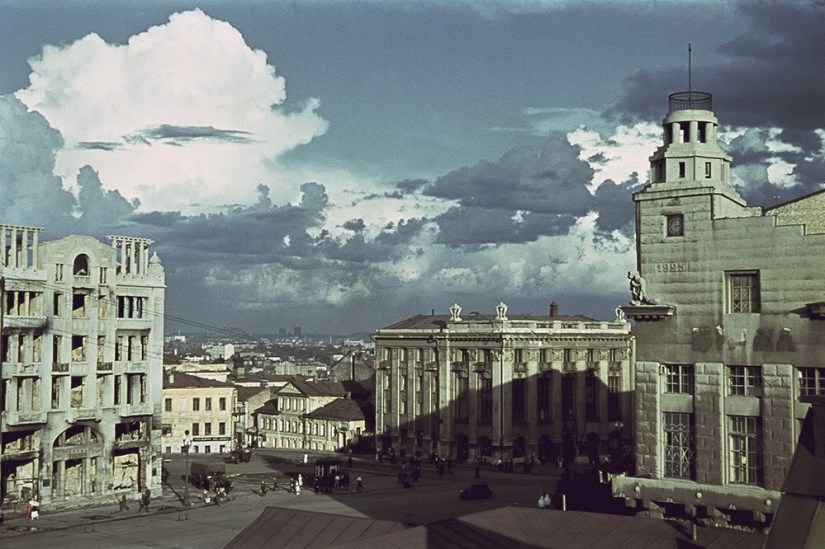
German cars in front of the hotel "Kharkiv" in 1942, at the city's Central square (now Freedom square), which since its founding in 1996 was called Dzerzhinsky square. During the German occupation in 1942 was called the square of the German army. From late March to August 23, 1943, was called the square of the Leibstandarte SS in name only what is secondary captured the city in the third battle for Kharkov the 1st division Leibstandarte SS "Adolf Hitler".
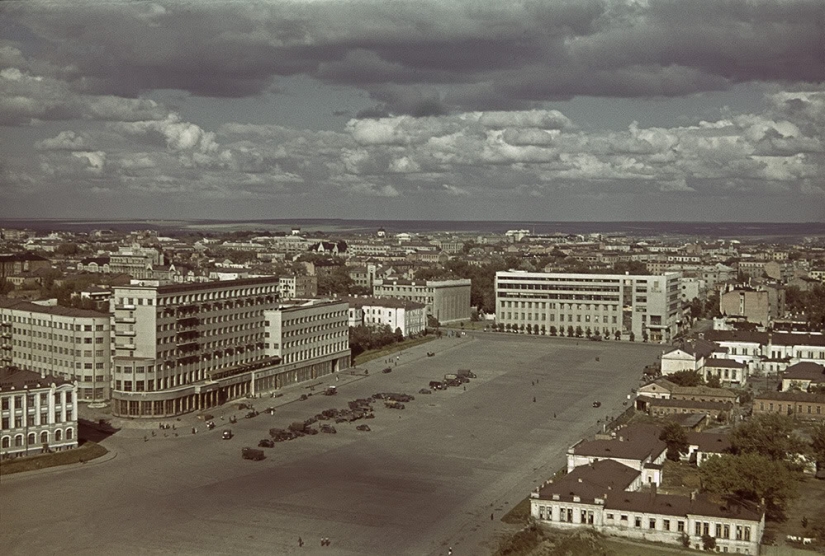
The queue for groceries grocery store near Kharkov in 1942.
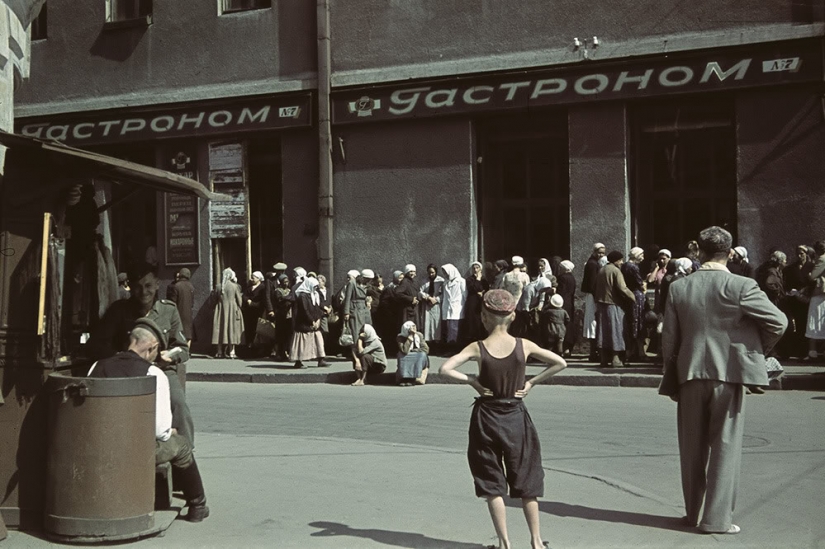
Photo Studio "Rembrandt" in the occupied Kharkov 1942.
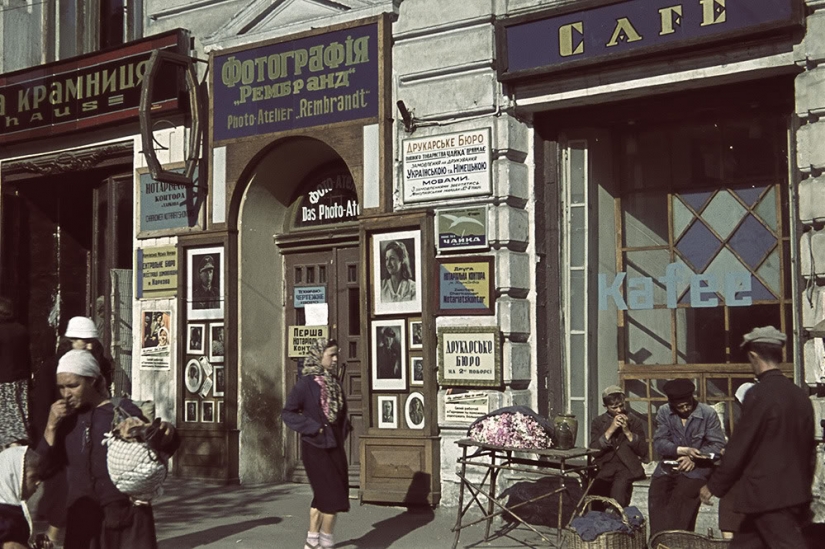
Trade at the entrance to the Central market.
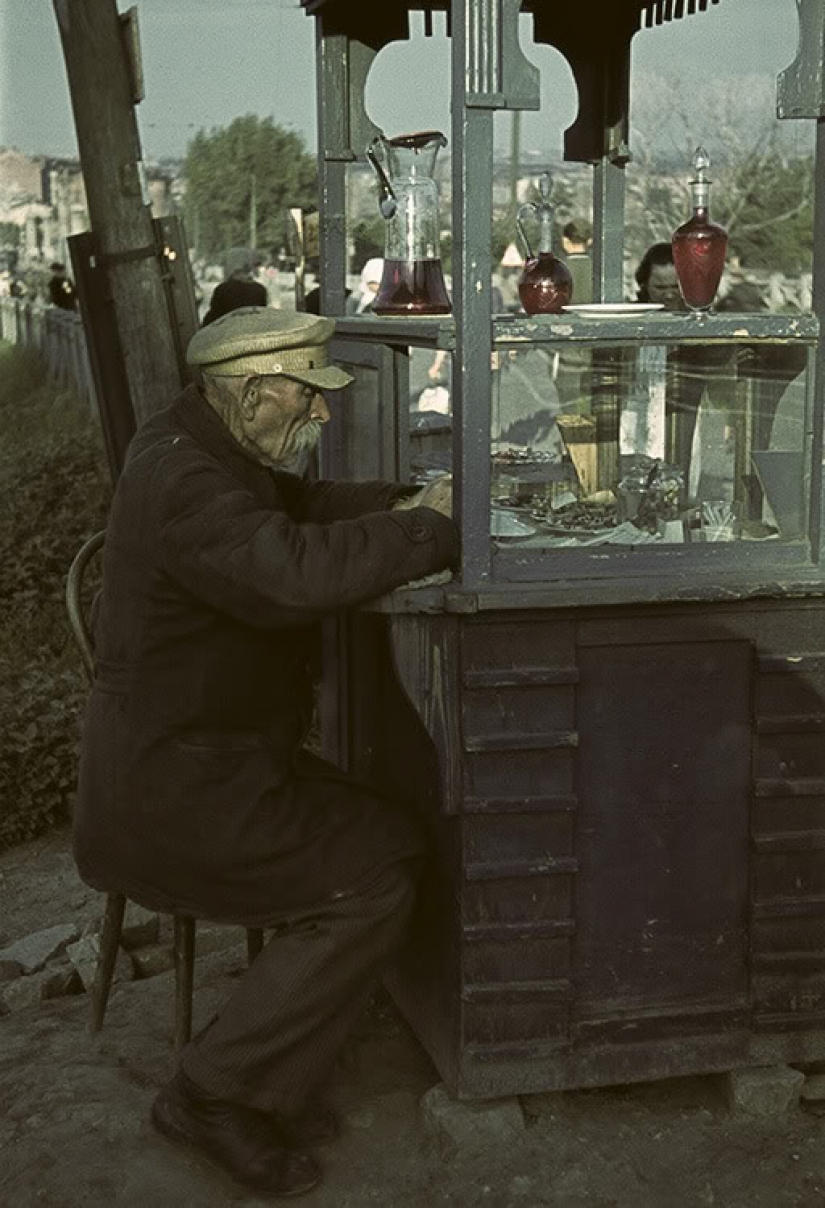
The embankment of the Lopan river, in the Central market area. On the horizon visible from the tram and the bell tower of the assumption Cathedral.
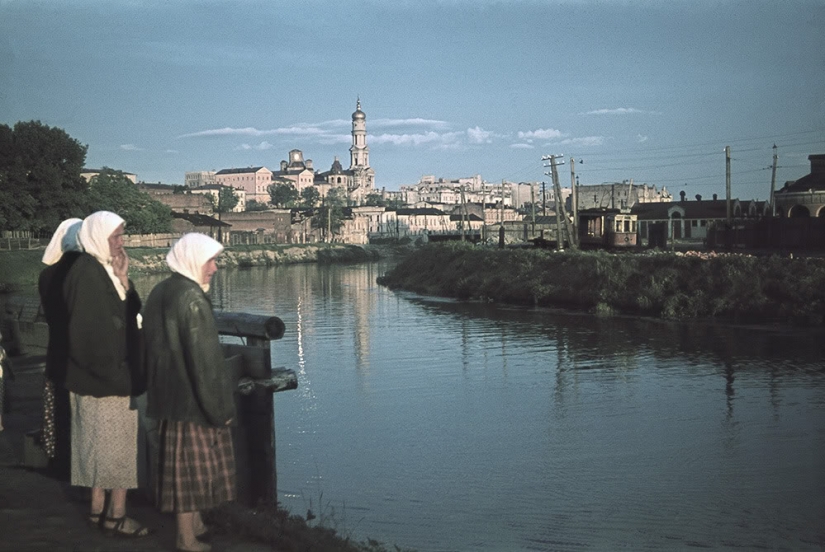
At the bridge over the Lopan in the occupied Kharkov 1942.
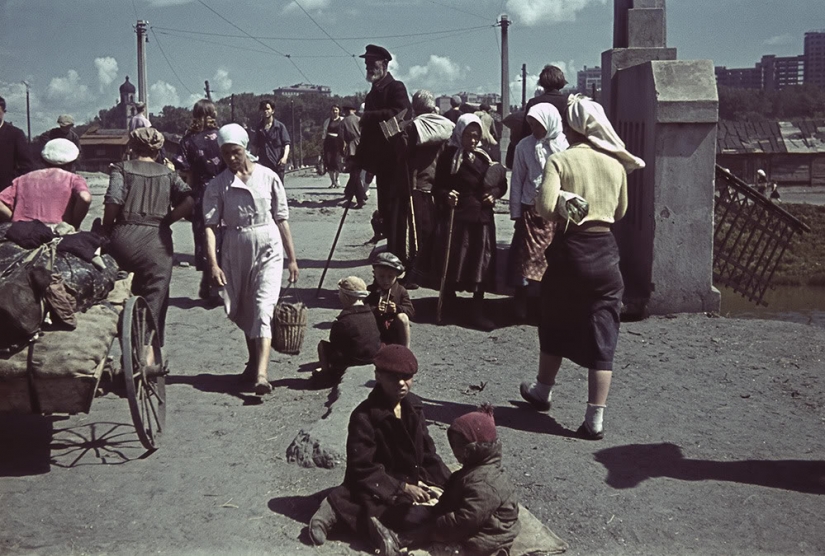
Children examine wrecked German tanks gathered on the Forecourt (by post office) occupied Kharkov. In the foreground is the command version of the tank Pz.Kpfw. III.
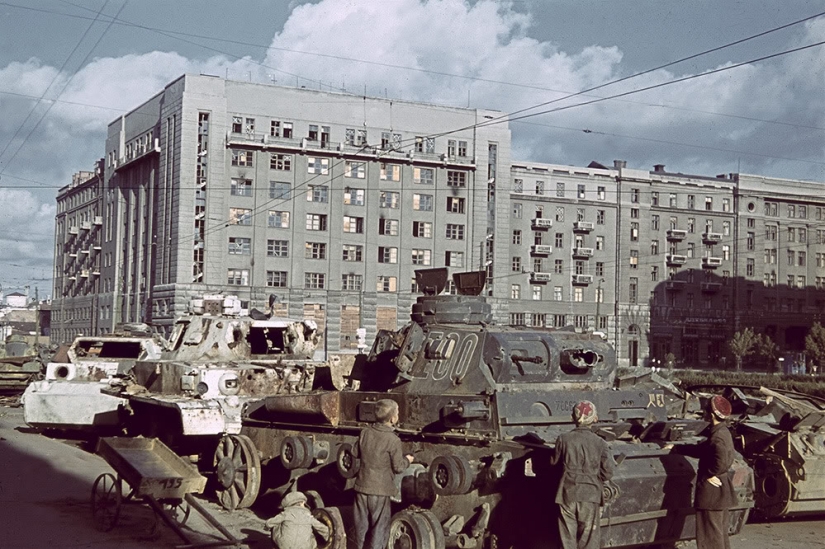
Sverdlova street, now the street Poltavsky Shlyakh.
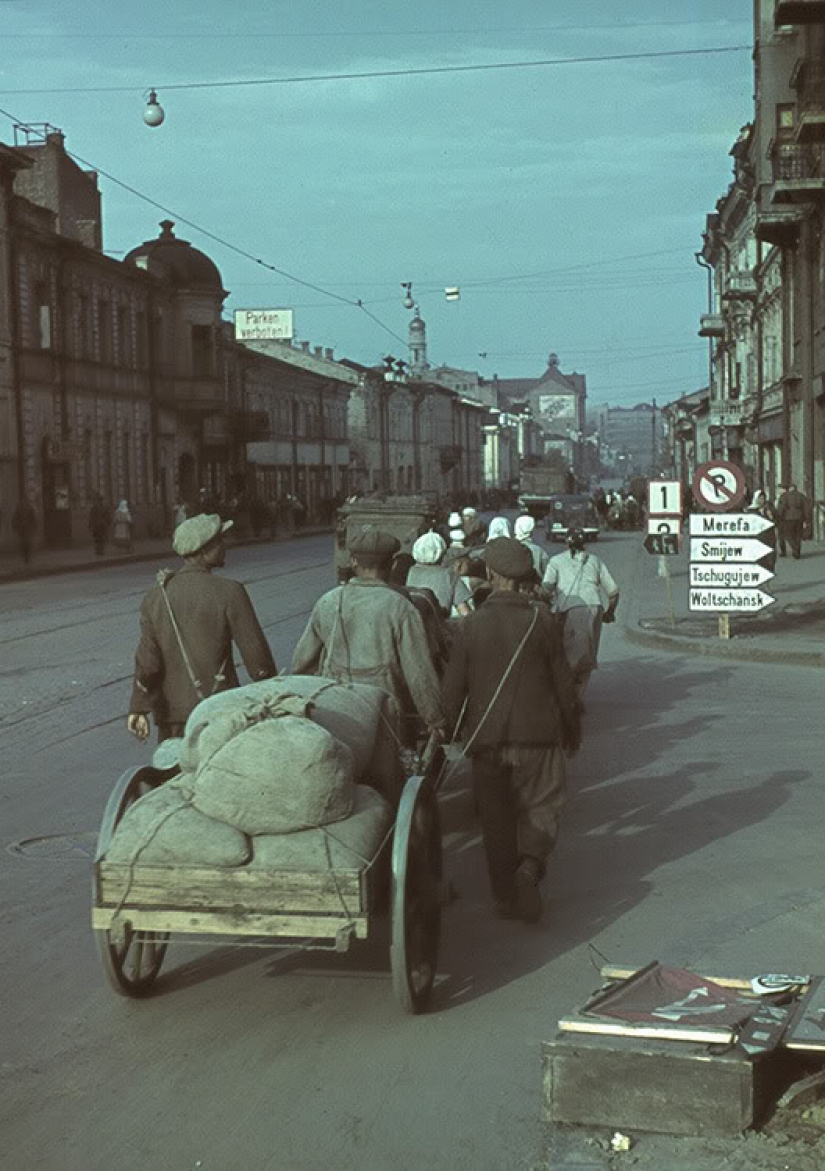
A German patrol on the background of the Mark V tank near the Historical Museum in Kharkiv.

Area Tevelev in occupied Kharkov (now — Constitution square). The building of the Noble Assembly (1820, architect V. Lobachevsky). Behind him is the Cathedral of the assumption.
During the fighting for Kharkov in 1943, the building was completely destroyed. Now in its place is a monument in honor of the proclamation of Soviet power in Ukraine (now dismantled).
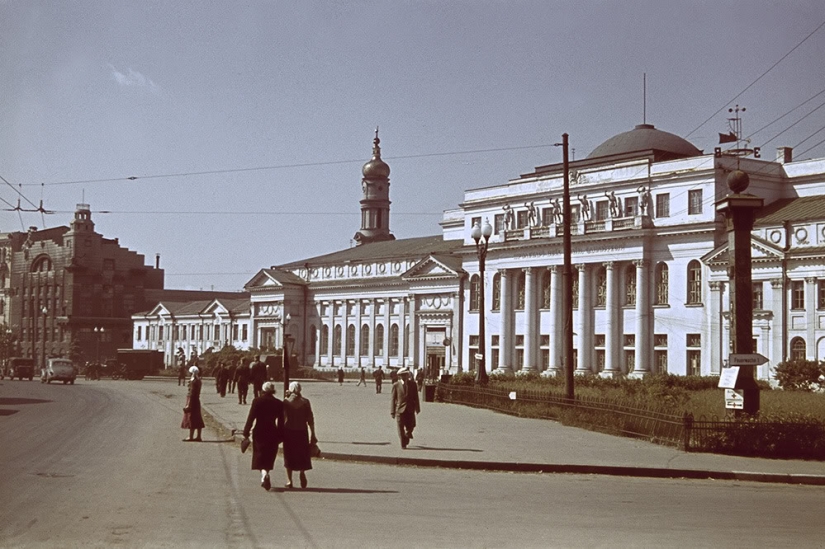
A tram passing along the street Sverdlova (now Poltava Way).

Damaged by bombing and shelling neighborhoods around the Annunciation Cathedral, which, like other Kharkiv Church was open for worship during the Nazi occupation. The building of the Cathedral was not damaged during the war.
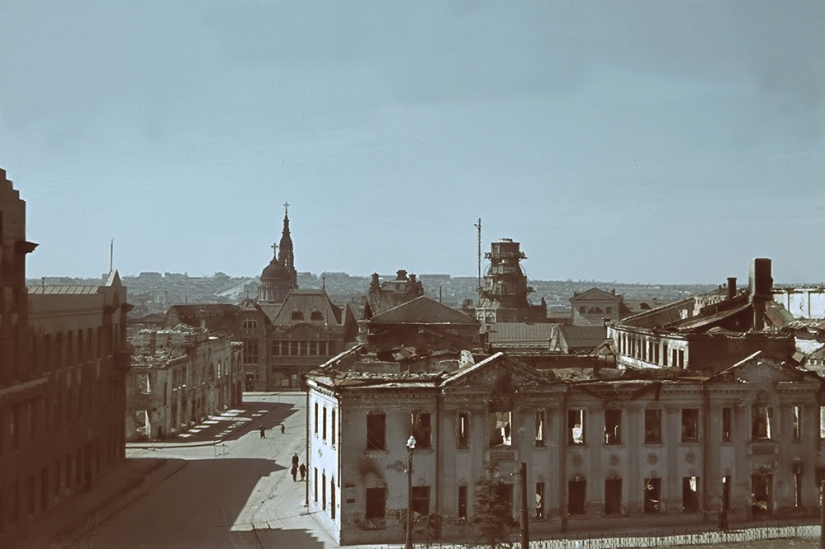
The building adjacent to the Central market, was severely damaged during the war.

Boat crossing the river Lopan. Against the backdrop of a blown up during the retreat of Soviet troops, the bridge and the Cathedral of the Annunciation.
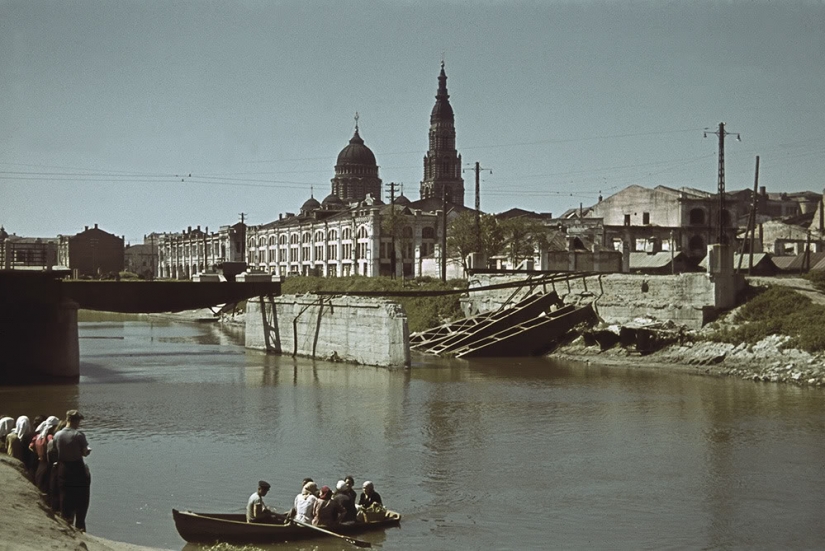
Tevelev square (now Constitution square) and the view beginning of the street Sumy. In the foreground — the House of science and technology.
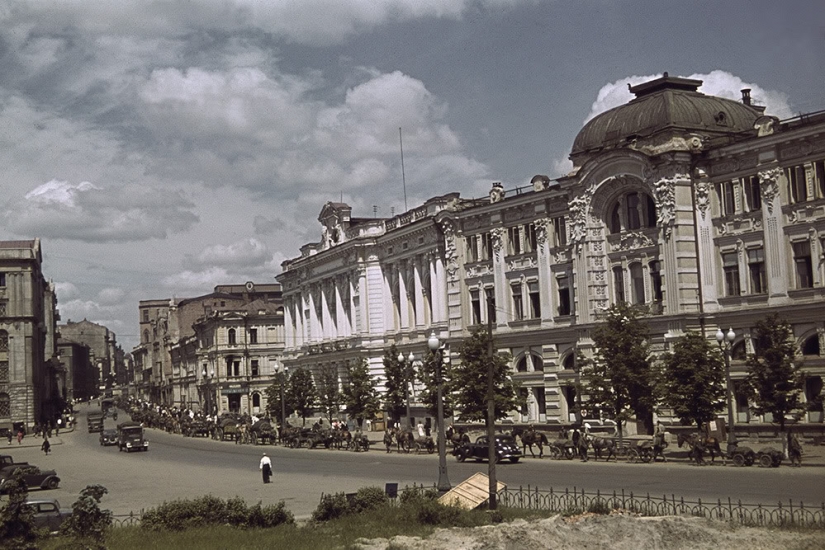
The derzhprom building in the occupied Kharkov.
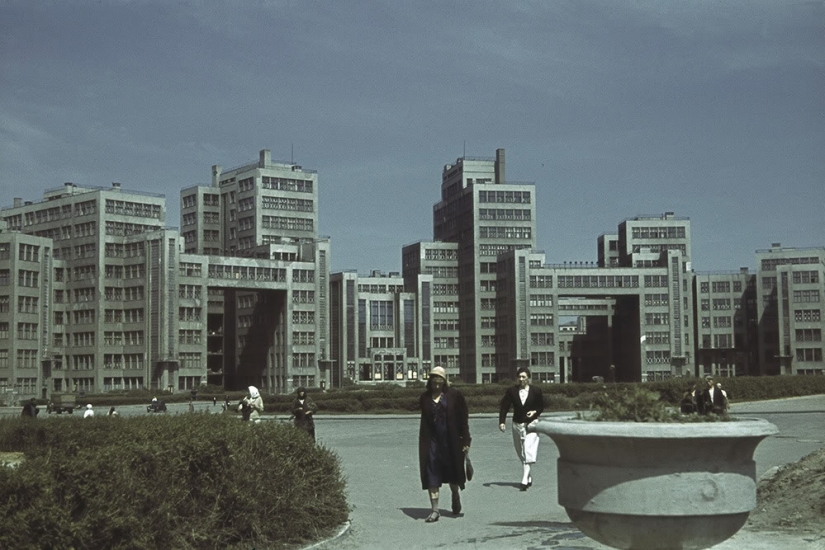
A resident of Kharkov looks at German propaganda poster. The inscription in Ukrainian says "For freedom of Nations".
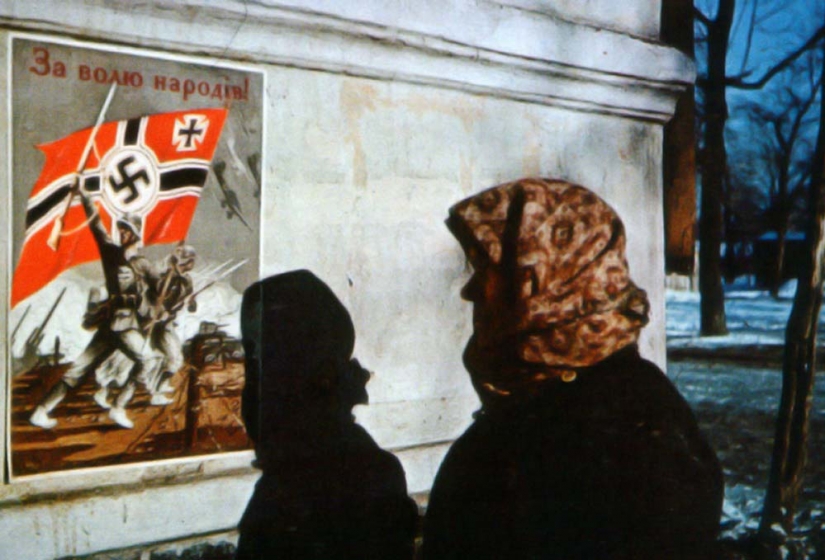
German traffic controller near the deli in occupied Zhitomir (the corner of a Large Berdichev (with tram rails) and St. Michael). Above the shop a banner with the inscription in German: "Welcome!". Photos often mistakenly attributed to the famous series of color photographs of the occupied Kharkov.
Keywords: Archive | World war II | The city | The Germans | The occupation | Kharkiv
Post News ArticleRecent articles

Thailand is a kingdom of amazing beauty, where the colors of nature mingle in a captivating palette of rich and varied landscapes. ...

Hamsters are one of the cutest animals in the world, and they are quite easy to keep. No wonder they are so popular. We have ...
Related articles

The Indochina Peninsula, located in southeast Asia, is a favorite place for tourists all over the world. Myanmar, Thailand, Laos, ...

General Dmitry Karbyshev — one of the Soviet commanders who performed his duty to the end. This man was captured in the battle, ...

After the surrender of Japan in 1945, allied forces led by the US invaded the country. The Empire disintegrated, its form of ...

May West once jokingly said that she should be given a license to invent sex, which she discovered for Americans. The name of this ...